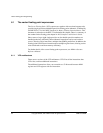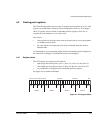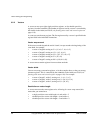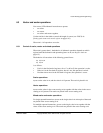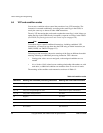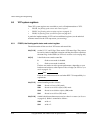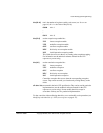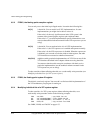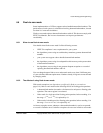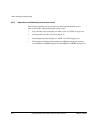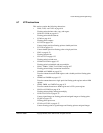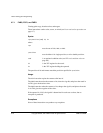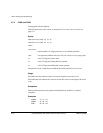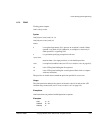
Vector Floating-point Programming
6-12 Copyright © 2000, 2001 ARM Limited. All rights reserved. ARM DUI 0068B
6.5.2 FPEXC, the floating-point exception register
You can only access the
FPEXC
in privileged modes. It contains the following bits:
bit[31] is the
EX
bit. You can read it in all VFP implementations. In some
implementations you might also be able to write to it.
If the value is 0, the only significant state in the VFP system is the
contents of the general purpose registers plus
FPSCR
and
FPEXC
.
If the value is 1, you need implementation-specific information to save
state (see the technical reference manual for the VFP coprocessor you are
using).
bit[30] is the
EN
bit. You can read and write it in all VFP implementations.
If the value is 1, the VFP coprocessor is enabled and operates normally.
If the value is 0, the VFP coprocessor is disabled. When the coprocessor
is disabled, you can read or write the
FPSID
or
FPEXC
registers, but other
VFP instructions are treated as undefined instructions.
bits[29:0] might be used by particular implementations of VFP. You can use all the
VFP functions described in this chapter without accessing these bits.
You must not alter these bits except in accordance with their use in a
particular implementation (see the technical reference manual for the
VFP coprocessor you are using).
To alter some bits without affecting other bits, use a read-modify-write procedure (see
Modifying individual bits of a VFP system register).
6.5.3 FPSID, the floating-point system ID register
The
FPSID
is a read-only register. You can read it to find out which implementation of
the VFP architecture your program is running on.
6.5.4 Modifying individual bits of a VFP system register
To alter some bits of a VFP system register without affecting other bits, use a
read-modify-write procedure similar to the following example:
FMRX r10,FPSCR ; copy FPSCR into r10
BIC r10,r10,#0x00370000 ; clears STRIDE and LEN
ORR r10,r10,#0x00030000 ; sets STRIDE = 1, LEN = 4
FMXR FPSCR,r10 ; copy r10 back into FPSCR
See FMRX, FMXR, and FMSTAT on page 6-33.



